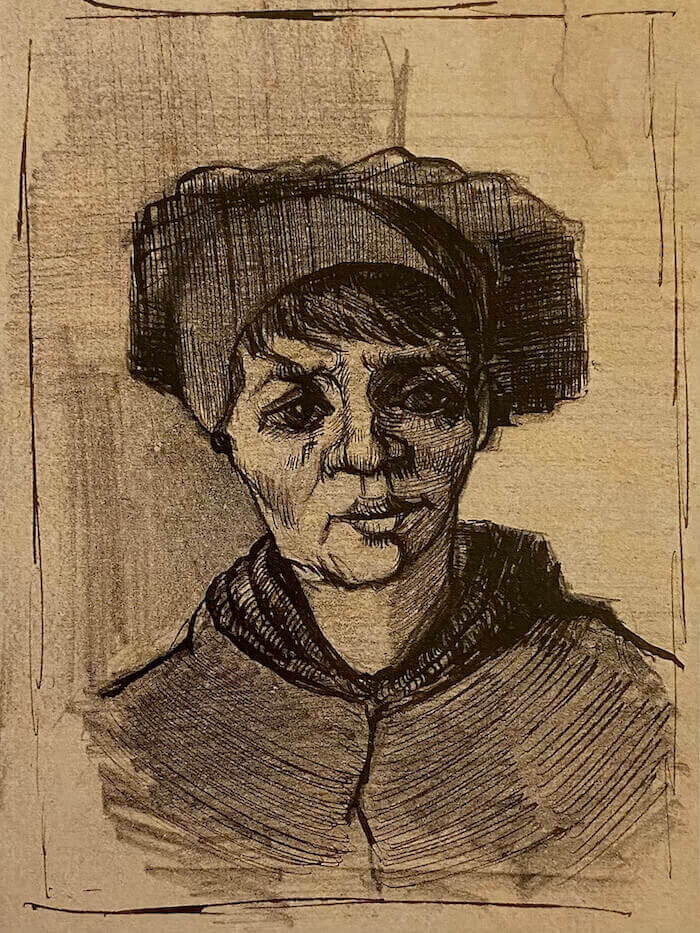Letter 03/15/1885 - by Vincent van Gogh

Painting these heads has kept me very busy. I paint in the daytime and draw in the evening. In this way I have managed to paint some thirty already and draw as many, with the result that I see a chance,
I hope, of soon doing things quite differently. I think that this will help me in general with figures.
Today I did one in black and white against flesh color. And I am always searching for blue. The figures of peasants here are blue, as a rule. That color in the ripe wheat or against the withered leaves of
a birch hedge, so that the faded shades of darker and lighter blue bring them to life again and make them more expressive by the contrast with golden tones or red-brown, is very beautiful and has struck me
here from the beginning. The people here all instinctively wear the loveliest blue I have ever seen.
It is coarse linen, which they weave themselves; the warp black, the weft blue, so that it produces a black and blue striped pattern.
When that is faded and has lost a little color from wind and weather, it is an infinitely quiet, delicate tone, which brings out the flesh colors very well. In short, there is enough blue to liven all other
colors, in which elements of orange are hidden, and it is sufficiently faded not to be discordant.
But this is a question of color, and it is the question of form that matters to me even more at the point I am now. To express form, I believe, an almost monochrome color palette is best, with the tones
varying mainly in intensity and value. For instance, Jules Breton's La Source was painted in almost a single color. But you have to study each color in itself, together with its opposite, before you can
be quite sure to achieve a harmonious result.
When there was snow, I painted a few studies of our garden. Since then the landscape has changed a great deal; we now have splendid evening skies of lilac with gold above toning silhouettes of the houses
between the masses of reddish-colored brushwood, above which the slender black poplars rise. The foreground is a faded and bleached green, varied with streaks of black earth and by pale, withered reeds
on the sides of the canal.




















